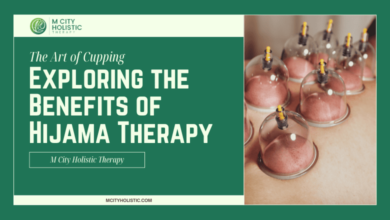The Ultimate Guide to Gastroscopy Treatment: What You Need to Know

Welcome to the ultimate guide on gastroscopy treatment. This article will explore gastroscopy, why it is performed, how to prepare for the procedure, what it entails, and the recovery process. We will also discuss the potential risks and benefits associated with gastroscopy, alternatives to consider, how to choose the best gastroscopy clinic in Toronto, and the cost involved. So, let’s dive in!
What is Gastroscopy?
Gastroscopy, also known as upper gastrointestinal endoscopy, is a medical procedure used to examine the upper digestive tract, which includes the esophagus, stomach, and duodenum. It involves using a thin, flexible tube called an endoscope with a light and a camera at its tip. The endoscope is carefully inserted through the mouth and guided down into the digestive system, allowing the doctor to visualize the internal structures and identify any abnormalities.
Why is Gastroscopy Performed?
Gastroscopy is performed for various reasons, including:
- Diagnosis: Gastroscopy helps diagnose conditions such as ulcers, gastritis, gastroesophageal reflux disease (GERD), Barrett’s esophagus, and stomach or esophageal cancer.
- Screening: It can be used as a screening tool to detect early signs of certain diseases, especially in individuals at a higher risk.
- Treatment: Gastroscopy treatmentenables the doctor to perform therapeutic interventions, such as removing polyps or tumors, stopping bleeding, dilating strictures, or placing stents.
Preparing for Gastroscopy
Before undergoing gastroscopy, there are a few essential steps to follow:
- Fasting: You will be asked to fast for a certain period before the procedure, typically around six hours. This ensures that your stomach is empty, allowing for better visualization and reducing the risk of complications.
- Medication adjustments: Prior to the procedure, it is essential to disclose all the medications you are currently taking to your doctor. This is important as some medications may need to be temporarily stopped or adjusted to ensure a smooth and safe procedure.
- Medical history review: Your doctor will review your medical history and discuss any concerns or allergies you may have.
The Gastroscopy Procedure
The gastroscopy procedure generally follows these steps:
- Sedation: You may be given a sedative or anesthetic to help you relax and minimize discomfort during the procedure. The doctor will discuss the appropriate level of sedation with you beforehand.
- Insertion of the endoscope: The doctor gently inserts the lubricated endoscope through your mouth and throat. You may be asked to swallow to aid in the passage of the endoscope.
- Visual examination: As the endoscope is advanced, the doctor will carefully examine the lining of your esophagus, stomach, and duodenum. Images from the camera are displayed on a monitor, allowing the doctor to evaluate any abnormalities.
- Biopsy or treatment (if needed): If any suspicious areas or abnormalities are detected, the doctor may take a small tissue sample (biopsy) for further analysis or perform therapeutic interventions using specialized tools inserted through the endoscope.
- Completion and removal of the endoscope: Once the examination and any necessary procedures are completed, the endoscope is slowly withdrawn.
Recovery and Aftercare
After gastroscopy, you will be monitored in a recovery area until the sedative effects wear off. It’s common to experience mild throat discomfort, bloating, or gas after the procedure, which should subside within a day or two. Your doctor will provide specific instructions regarding diet and medication, and following them diligently for optimal recovery is essential. If you experience severe pain, difficulty swallowing, persistent bleeding, or any other concerning symptoms, visit the best gastroscopy clinic in Toronto immediately.
Potential Risks and Complications
While gastroscopy is generally considered a safe procedure, there are some potential risks and complications to be aware of, including:
- Perforation: In rare cases, the endoscope may cause a perforation or tear in the digestive tract wall.
- Bleeding: Biopsies or therapeutic interventions may result in minor bleeding.
- Infection: Although rare, there is a slight risk of infection associated with gastroscopy.
- Adverse reaction to sedation: Some individuals may have an allergic reaction or experience complications related to the sedative used.
Benefits of Gastroscopy
Gastroscopy offers several benefits, including:
- Timely detection and diagnosis of gastrointestinal illnesses.
- Minimally invasive procedure and has a short recovery time.
- Ability to perform biopsies and therapeutic interventions during the same procedure.
- Reduced need for more invasive surgical procedures in many cases.
Choosing a Gastroscopy Clinic
When selecting a gastroscopy clinic, consider the following factors:
- Reputation and expertise of healthcare providers.
- Availability of modern equipment and technology.
- Quality of patient care and support.
- Convenience of the location.
- Insurance coverage and cost considerations.
Research online reviews, seek recommendations from trusted sources, and consult your primary care physician to make an informed decision.
Cost of Gastroscopy
The cost of gastroscopy can vary depending on factors such as the geographic location, the clinic or hospital, the complexity of the procedure, and insurance coverage. It’s recommended to contact your healthcare provider or the gastroscopy clinic directly to inquire about the specific costs involved and potential financial assistance options.
Conclusion
Gastroscopy is a valuable diagnostic and therapeutic procedure for evaluating and treating conditions affecting the upper digestive tract. A comprehensive examination of the esophagus, stomach, and duodenum allows for early detection, diagnosis, and intervention. If you have concerns about your digestive health or have been recommended for gastroscopy, consult with a gastroenterologist or healthcare professional at Canadian Place Endoscopy to understand the benefits, risks, and expected outcomes specific to your situation.
Check out these valuable insights and practical tips, and let your newfound knowledge propel you towards success. Happy exploring!









